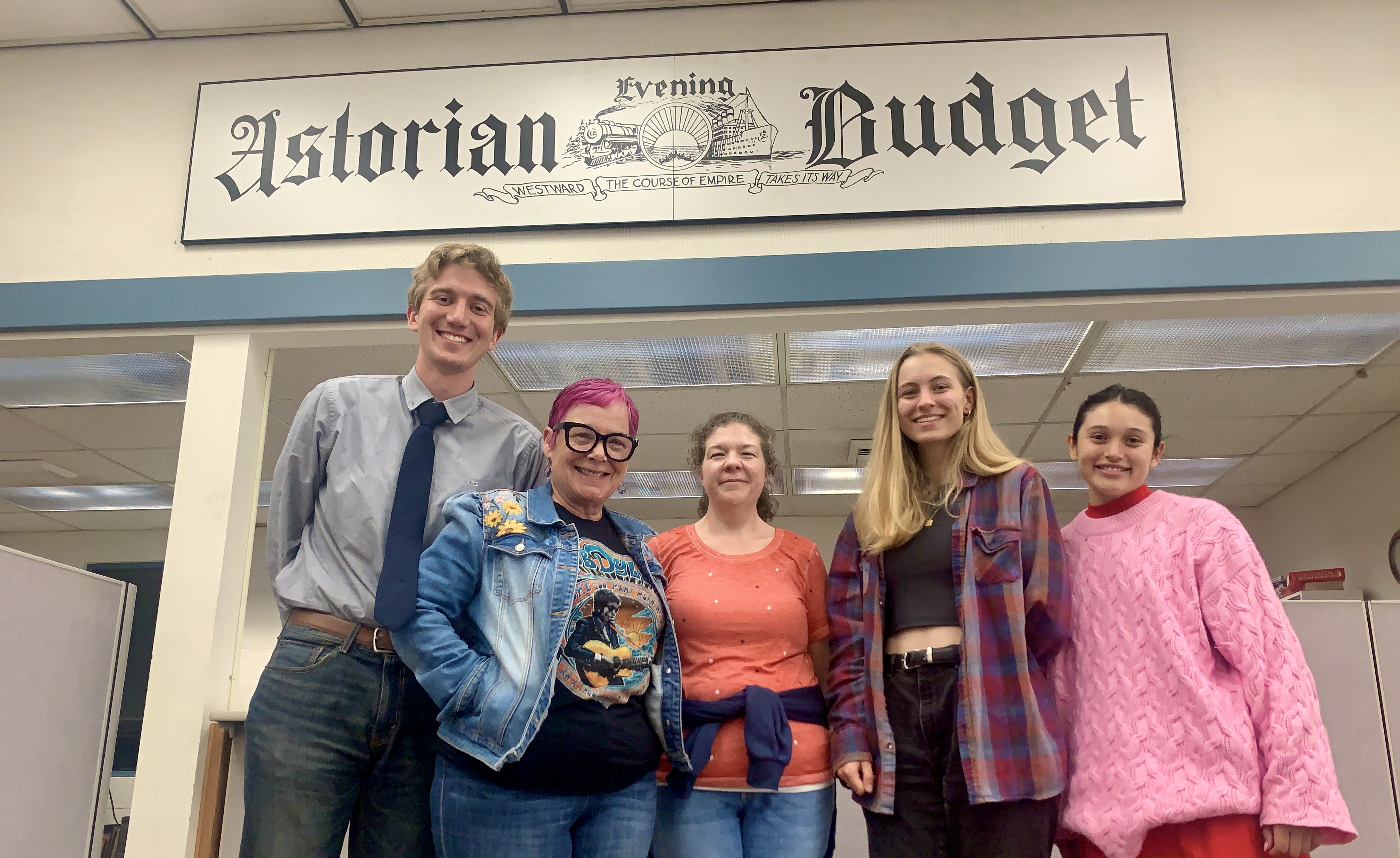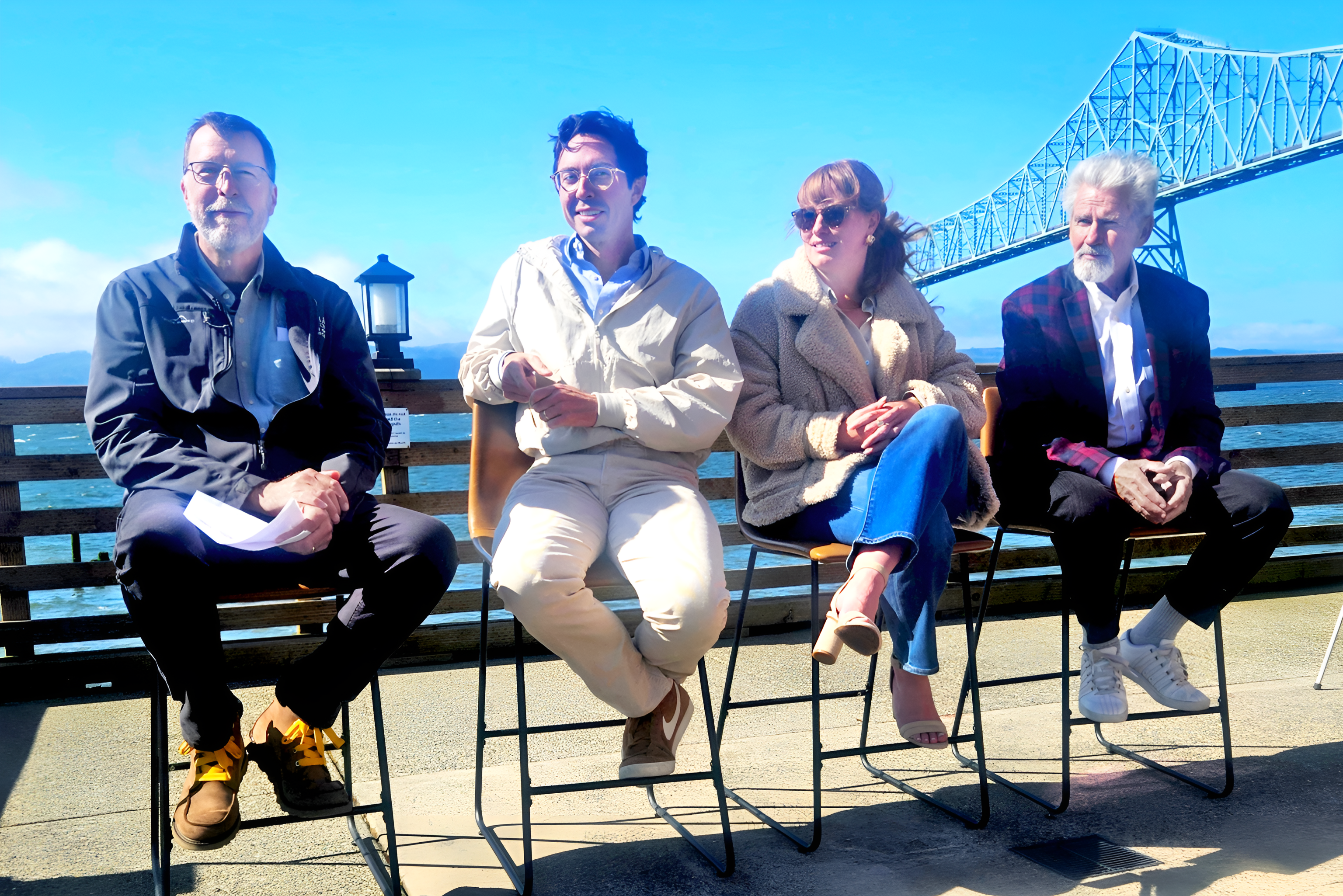The sweet life
Published 4:00 pm Sunday, November 11, 2007
PORTLAND – Glen Andresen’s passion announces itself even before your feet hit the walkway in front of his Alberta district bungalow.
The lazy whir of hundreds of bees drifts through tall shrubs that cloak his garden. A wall of perfume, the scent of honey mingled with beeswax, tickles your nose. A few steps into his sprawling garden, the not-so-secret source of this sensory banquet reveals itself: a tower of white boxes – one of several bee colonies on his city lot – standing sentry over 37 types of fruit trees, blueberry and raspberry bushes, vegetable beds and flowering shrubs.
Inside, the bearded, lanky 51-year-old in shorts and tennis shoes harvests the last of the 200-plus pounds of honey that his home bee colonies produced this year.
The smell is intoxicating, the work sticky, the kitchen cluttered with bins, buckets and a motorized honey extractor the size of an oil drum. “We go out a lot this time of year,” says Andresen, alluding to the almost complete lack of counter space for cooking a meal.
As if to show the trade-off for this inconvenience, he pulls a wood-framed panel from the white box on the floor, shaves off the layer of wax covering the cells, and beams at its sparkling amber contents. “That’s beautiful. That’s just pure honey there.”
Such are the simple joys of urban beekeeping. And though city folks such as Andresen – who eats, sells or gives away hundreds of pounds of honey each year to friends and acquaintances – have quietly pursued it for years, it’s now catching on with a new crowd.
The U.S. Department of Agriculture estimates there are up to 212,000 hobbyist beekeepers across the country. And while there’s no way of tracking the number of Portland’s urban beekeepers – who technically need city permits but seldom apply for them – folks close to the scene note new interest in the age-old folk art.
“It’s everywhere,” says Kicki Masthem, a 45-year-old sculptor and teacher, who set up a colony in her Southwest Portland yard this spring. “At the (Portland Area Beekeepers Association) bee meeting, there’s some old codgers there, and there’s a whole group of young people.”
Typically, the younger generation wants a personal stake in what they eat, or to give an assist to these pollinators, whose numbers are sliding nationwide. Some are just hungry for honey and a connection with critters in their backyards.
And though urban bees might not be the new chickens, listen up, and you might hear some buzz about a hive out back.
Chances are they’ll also be talking about “colony collapse disorder,” the unusual levels of bee-colony die-offs in recent years that have alarmed beekeepers and farmers, whose crops depend on the buzzing insects for pollination. While experts home in on a virus they suspect as one source of bee losses, the headlines have made more people think about the connection between bees and the food on our plates.
That’s partly why, says Wisteria Loeffler, more than 20 people showed up in a Southeast Portland church basement in April to hear about Zenger Farm’s community bee project, which she is facilitating. The six-acre nonprofit teaching farm off Southeast Foster Road is using grant money to add hives, build shelter for them and buy honey-extraction equipment for community use. Next spring, experienced beekeepers from the community will train interested folks in how to care for bees and harvest honey in exchange for their help in managing the farm’s hives and passing their knowledge along.
Across the Willamette on a city lot, sculptor Masthem already has been bitten by the bee bug. She set up a hive this spring and expects her first honey harvest next summer. “It becomes a drug,” she says about tending a hive of honeybees. “I read up on everything. You become obsessed with it.”
Andresen, a musician and gardening educator, stumbled into it 15 years ago when an old-timer bequeathed him knowledge and equipment. “I had no idea I would enjoy it so much. Or that it would cost so much money. Some people have fishing boats; I’ve got bee colonies.”
He loves most everything about it, he says, from the carpentry in hive-making to the puttering and tinkering it requires, and especially the honey, which he eats for breakfast and lunch every day.
“Beekeeping is a great place to become attached,” says Tom Lea, another veteran beekeeper, who has nine hives on his back patio in Southeast Portland. “You start noticing people’s fruit trees, blackberry brambles . . . that’s where all your honey’s going to come from.”
Lea’s neighbors know what he’s up to, and he keeps their cupboards stocked with honey. Some help with the honey harvest, a full day that leaves him with rows of 3-gallon buckets of the sweet liquid and an aching back.
The work, he says, is a fair price for the reward.
So what’s not to like? From a neighbor’s point of view, plenty, starting with fear of stings and swarms. Beekeepers say know your insects before you judge them.
Honeybees congregate around the hive but collect nectar from flowering plants as far as two miles from home. “They fly 40 to 50 feet up in the air and just take off,” Lea says.
Neighbors will see bees in their yard, he says, but no more than normal. Unlike yellow jackets and wasps, they’re vegetarian, surviving on pollen and nectar, and they’re not aggressive.
They don’t sting unless threatened. So sure is Andresen of his bees’ docile temperament, he and his wife have them in their yard despite the fact she’s allergic to stings. “My wife has said that honeybees are the golden retrievers of stinging insects,” he says. “By and large, they’re pretty friendly.”
That said, beekeeping is not something to take up on a lark.
It involves construction, meteorology, critters and growing things, not to mention the sticky business of extraction. You have a responsibility not just to neighbors, but also to other beekeepers, whose hives are vulnerable to diseases and pests that could spread far and wide from your colony.
It’s also expensive – at least a few hundred dollars just to get started – and time consuming, far more than a garden, backyard chickens or even most pets.
Folks like Andresen wouldn’t have it any other way.
Back in his kitchen, the extractor creaks to life, slinging honey from the 20 frames of honeycomb inside against the sides of the tank as it spins. The thick, dark liquid that spills into a bucket combines honey from hives at three locations around the city, some of it pale and mild, some darker – and all distinctive, based on the flowers visited by the bees. Andresen prefers to blend them, like squeezing cider from multiple varieties of apples. The result is complex, deep.
“It bursts with flavor,” he says, comparing local honey, not just his, but any, to the freshest garlic that “explodes” when you bite into it.
So if you’re not ready to get to know bees, consider getting to know honey – Andresen tries to taste local honey wherever he travels, he says.
“It’s sweet first of all, but then the flavor develops. And they’re all different. But they all taste good.”









